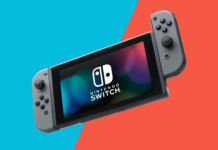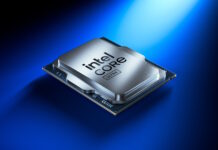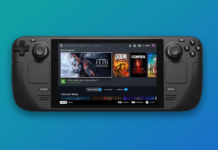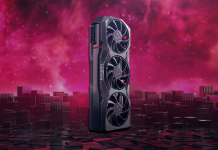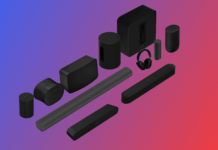During July ABIT arranged a competition for their European and Scandinavian users. The prize was a three day trip to Germany, where the climax was tickets to Germany’s Grand Prix at Hockenheimring in Meinz.
Apart from one happy winner in ABIT’s competition some Scandinavian and European media’s was invited, one from each country, and from Sweden, NordicHardware was invited…
During July ABIT arranged a competition for their European and Scandinavian users. The prize was a three day trip to Germany, where the climax was tickets to Germany’s Grand Prix at Hockenheimring in Meinz.
Apart from one happy winner in ABIT’s competition some Scandinavian and European media’s was invited, one from each country, and from Sweden, NordicHardware was invited.
ABIT’s F1 event started the first of August and ended on the fourth, and the reason for this pretty late article is that we’ve waited on an interview we made with ABIT. In this interview there were some technical questions which we couldn’t get answers on directly, thus delayed this article, but more about that later.
During these days ABIT had, together with Intel, a few presentations about the future for their companies and products. Among the most interesting presentations ABIT showed two of their upcoming products, ABIT IC7-MAX3 and DigiDice SFF. We’ve already given you infinite information about the first one, but it still was interesting to see the mainboard “in action”. For you who want a little more information and pictures of the board can look on our picture preview of ABIT IC7-MAX3.
Just in time to this article we got more information about the ABIT DigiDice and we’ll therefore spend a big part of this article for a detailed presentation of this unit.
But first of all we go on with the interview we did with Larry Wu and Thore Welling from ABIT.
As previously mentioned this interview has been delayed since some of the questions we asked had to be checked up by ABIT’s engineers to avoid misunderstandings. That is however only good since now we got some really in-depth answers to the technical questions too, and some of the questions only the engineers can answer.
The rest of the interview is answered by Larry Wu (Sales Manager) and Thore Welling (Germany’s Marketing Manager).
Let’s start with some questions regarding ABIT’s video cards.
[NordicHardware] Have you considered alternative graphic chip partners such as ATi, SiS, PowerVR or S3/VIA etc? Or are you staying 100% nVidia for the foreseeable future? [ABIT] For our graphics line as well as for our mainboard line the same guidelines apply. At any given moment we are of course testing all available chips and chipsets upon which to build our platforms. At present though, nVidia for us seems to be the most interesting graphics chip supplier. [NordicHardware] What is ABIT’s stance on nVidias “optimized” drivers? Some of the optimizations were very close to actual cheating as reported by numerous sites (3dmark03, ut2003, 3dmark2001 etc. has been affected.) Since this is something that’s almost completely out of ABITs hands but yet affects their products in a profound way I’m interested to hear some of your thoughts on the subject. Has it affected you or your consumers in any way?[NordicHardware] Why isn’t ABIT manufacturing a graphics card based on the GeForce FX 5900 Ultra GPU?
[ABIT] We are still in the process of evaluating as to whether there is a real market in our user base for this kind of product. [NordicHardware] Can you give us some more information on how the lateral leaking holes and beetle tube works on your latest OTES incarnation for graphics cards? [ABIT] This is a special design to make the OTES cooling device more flexible and platform independent. Our intention is to enable the user to use OTES on other cards as well. As a fun factor for example, you could take it off our card and stick it onto another card in order to see how much more you could get out of it. [NordicHardware] We haven’t seen many graphics cards with Video In or TV-tuners from ABIT. How come? [ABIT] True. Until now we have not seen a real market which would justify such a combi-product. But the implementation would lift the price of a graphics card considerably. [NordicHardware] When will we see Siluro IQ on a larger scale? Only the Ti4200-8x has been equipped with this software to our knowledge. [ABIT] Soon. In the beginning it was basically a test balloon. We wanted to see in how far the user really makes use of such a feature. Of course, right from the beginning we knew that the media, just like you, would fancy this feature a lot. But every now and then end users do not ask for such much but rather have things a bit easier. In this case though, your enthusiasm proved right. So our next move will be to implement this feature more stringently, e.g. FX 5600 OTES. [NordicHardware] What are your thoughts about the graphics industry and the rapidly increasing heat output from GPU’s? Is ABIT at the moment planning other cooling solutions than ordinary air-coolers, like for example water cooling? [ABIT] Well, as we regard ourselves as the avant-garde of graphics cooling it is almost self-explanatory that we have always put great emphasis on this issue. Nonetheless, you have to keep in mind that such solution must be reasonable. Reasonable in this sense simply means: price-performance.Water cooling of course is interesting, but for the mass market way too expensive as you can easily see from such product of our competitors.
We continue with some questions on motherboards and especially the MAX series that recently gained a new family member.
[NordicHardware] Even though the nForce2 chipset has been available for some time ABIT hasn’t announced an nForce2 MAX board as of yet. Is the NF7-series the one and only iteration of the nVIDIA nForce2 that ABIT will manufacture? [ABIT] As of present yes. But with future upcoming chipsets for AMD CPUs we are planning to also continue the MAX-concept. [NordicHardware] Why doesn’t ABIT offer motherboards in the enthusiast market with integrated SCSI controllers? [ABIT] You might recall, ABIT has always been trying to give our users the MAXIMUM bandwidth and connectivity on our mainboards. But at the same time we were trying to implement advanced features from the pro, and semi-pro market into mainstream products. One excellent example for this concept was our pioneering introduction of IDE-RAID. In the past that was only a thing for SCSI and server-platforms. For years now already it has become mainstream, with other manufacturers following our old slogan “RAID for Everyone”.A bit proud I might add, even Intel followed that idea by now increasingly integrating this feature into their chipsets already. [NordicHardware] ABIT has been promoting thier MAX-series of motherboards quite extensively since their introduction and in NordicHardware’s test labs the MAX boards have always proved to be good products. But has the MAX series been equally accepted by the consumers or is it more a way for ABIT to promote their enthusiast concept? [ABIT] You are raising an interesting question indeed. First of all, undeniably, a MAX board does not reach the huge quantities of mid-range mainstream boards. But still we were very surprised to the sales quantity to find out that there is a much bigger amount of users asking for such a fully features platform. In retrospective I guess we hit the right moment to launch that kind of products for various reasons:
a. Two years ago, in the beginning of MAX, more and more users without much hardware knowledge or interest for it went ahead and got a PC. They wanted an easy and hassle free platform, i.e. no driver issues, no IRQ issues etc. With MAX you get most extension card features already integrated and thereby all the drivers out of one verified hand.
b. MultiMedia, digital photography and home video took off. People wanted to create their own holiday photo albums and vacation videos etc. With our platform and let’s say Windows XP, they had the ideal system. USB 2.0, Firewire, enough extension possibilities for additional hard drives and optical drives and so on.
[NordicHardware] The newly released ABIT IC7-MAX3 board features a new cooling system that originates from the OTES VGA cooling. It’s designed to cool the PWM power regulation mosfets and capacitors but what real world effects can we expect from this?Will it give us extra stability and overclocking potential with todays CPUs or is it more of a security measure for the Prescott CPU’s released later this year that have been rumoured to be extremely power consuming? [ABIT] In the past the PWM has always been neglected. Sure, we started out as being the first ones to have 3-Phase and later 4-Phase-Power solutions. But that still is not enough under certain conditions. But on top of cooling the PWM area, if you take a closer look on the MAX3 OTES system, it is right adjacent to the CPU-cooler/fan. And right at that site we have an opening to suck in the heat which develops at that area. Thereby CPU and PWM heat will be blown out of the system most efficiently. Pretty cool, huh? [NordicHardware] And when we’re already on the subject of ABIT IC7-MAX3 and its OTES cooling, why isn’t the PWM power regulation mosfets equipped with heatsinks? A combination of heatsinks and a fan tunnel would in our mind be ideal. Have your engineers come to another conclusion or is it more a matter of cost and additional work? [ABIT]Well, sure there would be a hundred more solutions for cooling, but as mentioned before, it is also always about cost, or price-performance. No doubt, we could create an absolutely cool mainboard. But it would probably cost 1000 €. Would you buy it?
As for the surrounding heatsinks. We believe that kind of solution is only effective to a very limited degree. But worse, such heatsinks would weigh quite a bit and thereby put yet more stress on the mainboard’s PCB. Long term this could result in tiny damages of your mainboard circuitry. [NordicHardware] ABIT has like many other motherboard and graphics manufacturers broadened their product lines trough the years. We’re wondering if ABIT has any new product lines in the works for this year or in the foreseeable future? [ABIT] First of all we are awaiting our new “DD”. DD stands for DigiDice and represents a multimedia platform in hifi-style for your living room. You’ll hear much more about this in the very near future. So make sure you stay tuned. [NordicHardware] We thank Larry Wu and Thore Welling from ABIT for taking their time to answer our questions!
The last question in our interview was written before we actually knew anything in specific about ABIT’s DD-unit, but just before we posted this interview we received quite a lot of information except for what we learned in Germany, and we would like to share this with you. Before we end this article we offer you a preview of ABIT’s upcoming SFF-system, ABIT DigiDice.
In contrast to ABIT IC7-MAX3, ABIT DigiDice was a much more anonymous product when we first got to see it live as the first medium in Germany. The copy shown to us had come directly from ABIT’s engineers and was not a complete product, although it was more than adequately suitable for a preview. A major problem was, however, that the case never came of the chassis, which prevented us from shooting any pictures of the interior. In addition, we have been supplemented with pictures from ABIT, which gives a clearer view of the system’s insides.
DigiDice is ABIT’s first step into the SFF (Small Form Factor) market and it was early made clear that this wasn’t yet another attempt of Shuttle plagiarism. ABIT has in a regular manner targeted its system on the computer enthusiast, but still points out that DigiDice is a multimedia unit, likewise adapted to your living room.
 |
As is revealed in the picture, the unit does neither look like a regular SFF barebone nor like a component in your HiFi system. Instead, it’s something of a hybrid between the two.
Whether the shape itself is congenial is obviously a matter of taste, but one thing is clear; ABIT DigiDice stands out from the rest.
|
|||
|
|
||
|
|||
ABIT DigiDice has several features that we generally not get to see in SFF systems, or computers at all. A large LCD display, quick-buttons, and a 6-in-1 card reader is just a handful of them. The part of the front that hosts the card reader and the expansion units is covered by a panel, permitting a stylistically pure outer. The panel can easily be interjected in a jiffy when one needs access to the units.
In conformity with Shuttle, ABIT is using a cooling with heat-pipe technology where the heat is transferred from the CPU heatsink to another heatsink mounted in the back of the case. However, we can see a quite rare solution for how the heat is conveyed in ABIT’s DigiDice; as the company is highly satisfied with its OTES cooling, it has chose to utilize a variant of this in its SFF as well.
An external fan sucks air into the air tunnel of the OTES system, which on its part leads the airflow over the heatsink and removes the heat.
How effective this cooling method is, is yet to be seen, but it is doubtlessly an innovative solution.
The number of fan slots on the DigiDice system may seem disquieting and according to ABIT’s product presentation, the system has the following sound-levels; Idle 28 dB, normal 36 dB and OC 41 dB.
Where the line is drawn between idle, normal and OC is nevertheless a tad unclear, so we probably have to wait for definitive tests to evaluate the system’s sound-level.
Looking at the unit’s qualities and features, one will immediately notice the most central spot of the whole system; the big blue display.
This display is intended to make the system even user-friendlier, along with the quick-buttons. In addition to instant access to music, movies and other multimedia applications, it is also possible to read temperatures, fan rotation speeds and HD/LAN usage on the display. The unit will also take advantage of a remote control to further improve user-friendliness.
You will even be able to overclock your system through the “function wheel” on the unit, which otherwise admits control of volume and e.g. fan speeds.
Right below, an explanation of the LCD display’s layout from ABIT’s PowerPoint presentation is to be found.
 |
It feels foolish to say too much about DigiDice before we’ve received a test copy of ourselves, but it is already made clear that ABIT has the intention not to disappear in the multitude of the SFF market.
In the present situation, however, there are still a couple of question marks in the presence of the launch of DigiDice. Naturally, the price is a truly important one and according to what we’ve learned, discussions about this are still going on at ABIT. We’ve heard that ABIT is planning to release its SFF system at a fairly competitive price to reach a market as wide as possible, thus we are not too anxious that this will be a very expensive affair, despite the whopping amount of features being offered.
The design of ABIT DigiDice is also another question mark as it is somewhat hard to place, but whether or not this will be a problem for the consumer is, of course, a highly personal matter.
We’re waiting excitedly for a review copy of the DigiDice, and are hoping that this will suppress your worst curiosity in the meantime.
For those interested, we also have the preliminary specifications of ABIT DigiDice here.


